#dead leaf katydid
Photo


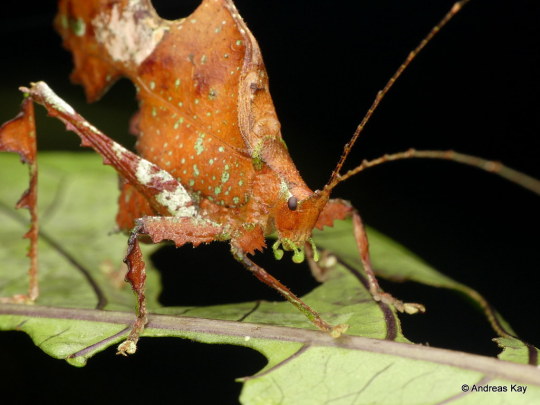
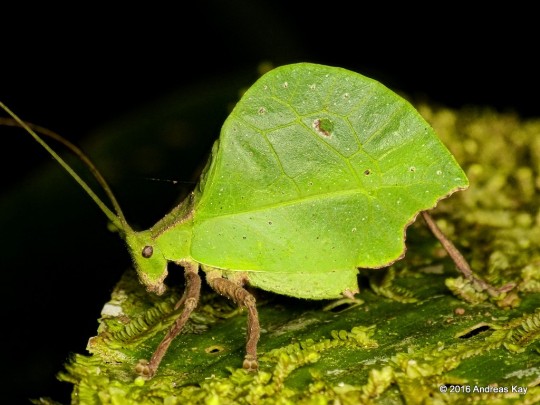


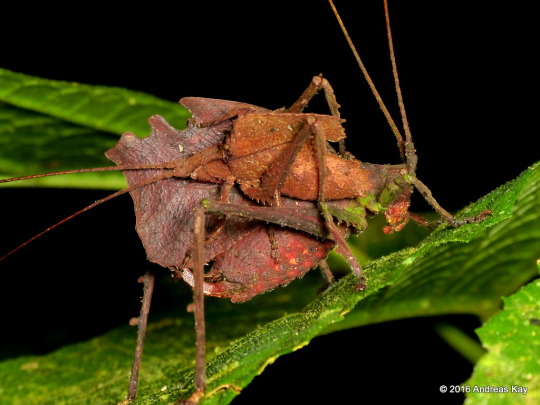




Leaf-mimic katydids in the genus Typophyllum
Photographed in Ecuador by Andreas Kay
#animals#curators on tumblr#insects#bugs#katydid#leaf mimic katydid#dead leaf katydid#Typophyllum#mimicry#camouflage#one nice bug#long post
388 notes
·
View notes
Text
*bleeds on you to discourage predation*
#It is 1am have a biology shitpost about autohaemorrhaging#Horned lizards#Oil beetles#Leaf beetles#Ladybugs#Spittlebugs#Sawflies#Tiger moths#Katydids#Bushhoppers#Armored ground crickets#Stoneflies#West Indian Wood Snake#European grass snake#Long nosed snake#Eastern hog nose snake#Plain-bellied water snake#Snakes mostly do it from their mouth as a playing dead assist#Bugs do it from their joints and it usually contains toxic or foul tasting compounds#Horned lizards shoot it from their eyes because why the fuck not I guess
1 note
·
View note
Note
hi i’m op of a post you reblogged i wanna hear some cool bug facts. i want to hear your bug knowledge please
OK. I won't lie I'm not a bug expert so these might seem basic, and are specific to where i live, but I will GLADLY share some with you oml
So, in my state of Florida, I unfortunately got stung by a puss caterpillar. I don't recommend it - it hurt so bad I thought my skin was burning, and my bones started hurting. Turns out, caterpillars can be poisonous! Also fun fact, we have several poisonous caterpillars (tussock moth, Saddleback and buck moth) and even poisonous trees (poisonwood and manchineel) but there are like no venomous spiders. Correlation? You're scared of the wrong thing.
Also fun fact (not even involving bugs) but north America has the wussiest venomous spiders. The brown recluse and the black widow seem scary but I'm more scared of the caterpillar. The spiders don't wanna bite you, they just wanna hang out :(
ALSO DID YOU KNOW THAT THERE IS A LEAF CRICKET??

This is the Giant Florida Katydid and man do I love them...I don't see them that much anymore but leaf crickets <3
One last bug fact -> millipedes are NOT centipedes. Centipedes are very "flight or fight" and depending on the species would actually try to fight you, while milipedes curl up into a little ball and try to play dead if scared. Also milipedes look round and friendly while centipedes are sharp and mean. I think it's important to make the distinction
I have some more, but these are what I could think of for now lol.
#bugs are cool i mostly just observe them though#so for me its like the native species in my area#or whatever invasive species is becoming popular :(
6 notes
·
View notes
Text
Parts of Nevada are being overrun by an explosion of flightless, ground-dwelling cannibalistic insects creating nightmares of Biblical proportions.
Business and residents said they are battling millions of Mormon crickets that descended on the state this week in an effort save land and morale.
In Elko, a city in northeastern Nevada south of the Idaho border, crickets converged Monday, covering roads, vegetation, and even local hospital walls, multiple media outlets are reporting.
“Just to get patients into the hospital we had people out there with leaf blowers, with brooms, at one point we even had a tractor with a snowplow on it just to push the piles of crickets and move them on their way,” Steve Burrows, director of community relations at Northeastern Nevada Regional Hospital, told local KSL TV.
Native to western North America, the crickets' populations are cyclic over many years and some residents in the mini-metropolis of just over 20,000 people, are not pleased with their return.
“They’re just gross,” Precious Drake of Elko, told the outlet. “They look like spiders, and they poop everywhere.”
What do Mormon Crickets eat?
According to the University of Nevada in Reno, Mormon crickets can grow larger than two inches and are found in rangelands west of the Missouri River and across all of Nevada. They eat perennials, grass, shrubs and crops, subsequently reducing feed for grazing wildlife and livestock.
Mormon crickets are also cannibalistic and, if their bellies are not full, will eat one another dead or alive.
The insects are not true crickets but are "shield-backed, short-winged katydids that resemble fat grasshoppers that cannot fly," according to the university. Adult Mormon crickets have long antennae and a shiny exoskeleton in a wide array of colors and patterns.
In mass quantities, their feeding contributes to soil erosion, poor water quality, nutrient depleted soils and other land damage.
Mormon crickets prefer drought conditions and can cause "substantial economic losses to rangeland, cropland, and home gardens," according to the university. "This is particularly true as adults and nymphs of Mormon crickets migrate in a band, eating plants along their paths."
The Nevada Department of Agriculture did not immediately respond to USA TODAY Friday morning to say how many counties reported an infestation.
Buggers' name stems from Utah
Last June, farmers and government officials across Nevada northeast to Montana battled the insects as they destroyed crops.
The insect's name dates back to the 1800s, when the bugs ruined the fields of Mormon settlers in Utah. But amidst drought and warming temperatures – conditions favored by the insects – outbreaks across the West have worsened.
According to Utah State University, an infestation is when there are at least eight crickets per square yard of land.
Because Utah's spring has been cool and wet, only "a few small infestations" have been reported so far this year, according to Utah Public Radio.
'Greasy with the squashed entrails'
In 2017, Arlington, Oregon, saw its largest Mormon cricket outbreak since the 1940s. The roads were "greasy with the squashed entrails of the huge insects," which damaged nearby wheat crops, the Associated Press reported.
Skye Krebs, a local rancher there, called outbreak "truly biblical."
"On the highways, once you get them killed, then the rest of them come," Krebs said.
Farmers who experience infestation issues are encouraged to call the their state's respective Department of Agriculture.
#nunyas news#they changed the name of the asian carp#because of fee fees#wonder if they'll do this too
11 notes
·
View notes
Text
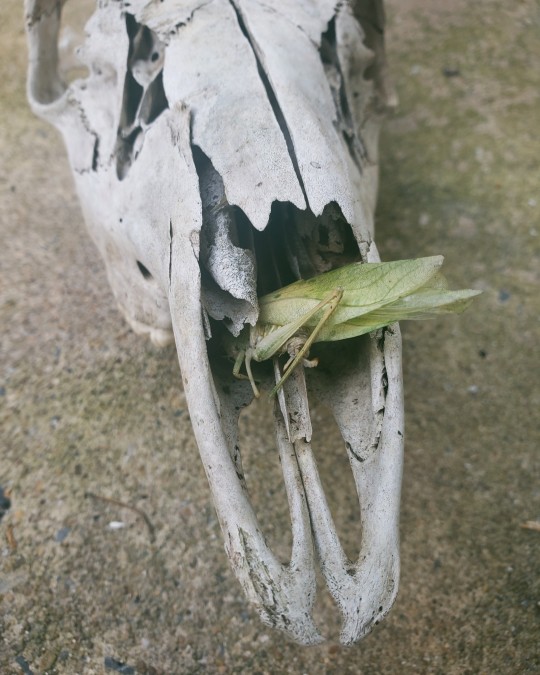
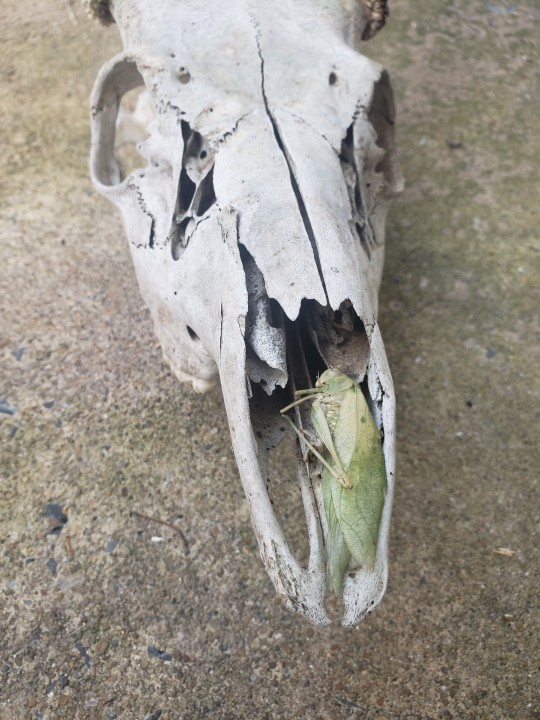
I've been finding dead things, intentionally and otherwise, for a long long time. this one was a first. it was particularly windy today and I have this deer skull sun bleaching on my porch. I thought it had gotten some leaves stuck in it, but to my shock one of the leaves was not a leaf. it was a katydid.
story time! my middle name is katharine. my great grandfather called me "aoelaigh-kate", which ended up becoming "katydid". and he was the only person who was allowed to call me that. he taught me so much in the short time I had with him before he passed when I was 7. the day he passed I was visited by a katydid and it was the first time I saw one in real life. I went outside to cry because I had been insensitive and hurt my moms feelings while she was already heartbroken and grieving. and there he was. there was no doubt and still isn't that that was my poppy. I still get visited by them when things are hard, or when I'm doing something stupid, when I need guidance. so to find one dead was....surprising. and weird. I keep thinking this has to be symbolically bad but I dont feel that. it doesn't feel bad. what does it mean?

bonus pic of my poppy because he was great
29 notes
·
View notes
Video
VIDEO Dead leaf katydid, Pycnopalpa bicordata from Ecuador by Andreas Kay
Via Flickr:
youtu.be/5Q2mhCTJrJ4 from Ecuador Dear Friends of Ecuador, I have Glioblastoma and do not have the time to carefully edit my videos. If you are interested in my Macro Photo- and Videography techniques: www.photomacrography.net/forum/viewtopic.php?p=253542#253542
10 notes
·
View notes
Video
The Peacock Katydid resembles a dead leaf when its wings are closed. But, its eye spots and vivid colors are displayed when it feels threatened. . Video: Frank Deschandol @butterflybabegallery @butterflybabejewelry @mothwhispergallery . #nature #etsy #spirit #butterfly #natgeo #animal #fantasy #altar #science #art #darkart #fall #wanderlust #witch #handmade #energy #mothernature #motherearth #mystic #bohemian #freespirit #wicca #moonchild #autumn #earth #mystical #mermaid #fairy
#science#motherearth#fairy#handmade#nature#energy#freespirit#butterfly#mermaid#autumn#moonchild#etsy#wicca#darkart#natgeo#animal#spirit#bohemian#wanderlust#fantasy#mothernature#altar#witch#mystic#art#fall#earth#mystical
2K notes
·
View notes
Photo
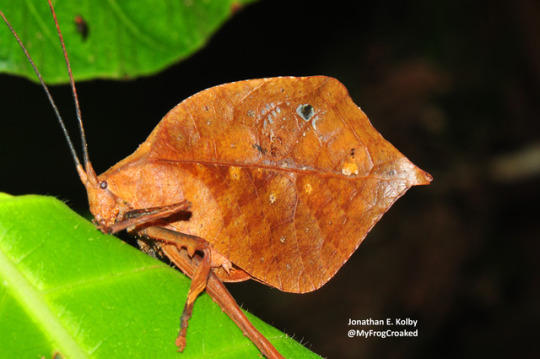
This “leaf” is an animal! Dead leaf katydids amaze me every time I see them. Typophyllum sp. found in Honduras.
Source: @MyFrogCroaked on Instagram
#Forest#animals#instagram#nature#wildlife#insect#science#rainforest#macro#bugs#honduras#biology#travel
66 notes
·
View notes
Text
so I used to work/volunteer at a science education centre and I thought I would share some funny stories that happened before I forget them - another volunteer comes into the lab and is laughing talking about what he found in the back of the freezer full of dead things. it was a drumstick, like the ice cream kind. we're both like, wtf who put that in there?? turns out it was a co-worker who brought it to work and intended to eat it later... but there was no freezer so she had to put it with the multitude of dead insects. WHY. - we have an infestation of mice in the butterfly gallery. unfortunately, my boss puts in traps... the mice mostly outsmart him however, and manage to take the food off the traps without setting it off. but unfortunately for the insects, they're not very smart... and the gigantic (like I mean GIGANTIC) atlas moth flew directly into one, and managed to position himself in such a way that the metal thing came down and his head came clean off of the rest of his body. the poor thing got beheaded... (I know that sounds super sad, but he was near the end of his lifespan and would have died naturally in about 2-3 days anyways) - so another part of my job was to hold out large tropical insects and give visitors the change to hold them and learn about them, including children. so I take out a giant malaysian walking stick, which, thank god, has a hard exoskeleton and is full of spikes. mother and toddler come to see and the moms like "touch it gently, honey" so the toddler reaches out slowly, and then all of a sudden SMASHES the palm of his hand onto the poor thing. she hisses very loudly, everyone is horrified but thankfully the little girl was alright and unharmed (but pretty pissed off) thanks to her hard plates on her back. - talking to coworker about gigantic katydid. I'm like, do you ever take it out? he's like, no because screams. a few weeks before, a volunteer wanted to see it up close but it jumped and flew away and he had to chase the screaming insect half way across the room, and managed to catch it before it possibly could have flew over the railing into the deep rock chasm - takes giant millipede out for children. millipede doesn't move. millipede kicked the bucket. "umm, sorry kids... this one is a bit tired today, let's put him back" - some butterflies mimic dead brown leaves, and they also like to rest in the middle of the area where people walk. so in the morning when I'm doing the vacuuming, I move the vacuum suction part over to a dead leaf of the floor and then I'm like... wait... it's A BUTTERFLY, SHIT but I realize like like .5 seconds before and it's too late and I'm a butterfly murderer - in the middle of taking out a very spikey insect for visitors. said insect is a bitch and likes to poke me really hard with all of her leg spikes when she's angry. visitor is like "omg are you okay??" and seems really worried and I'm like "yeah I'm fine, why do you ask" and turns out I was bleeding and I had to reassure all the very concerned little old ladies that I am in fact okay and not critically injured
6 notes
·
View notes
Photo
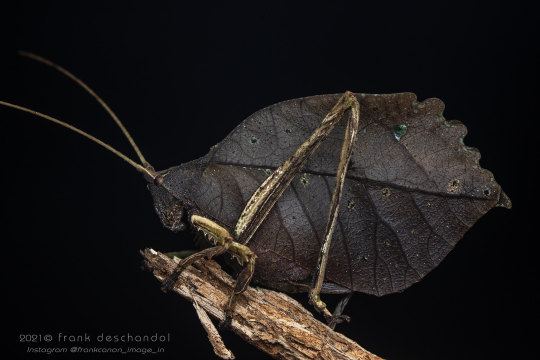

Dead leaf katydid, Mimetica cf. crenulata, Tettigoniidae
Photographed in Costa Rica by Frank Deschandol // Instagram
Photos shared with permission; do not remove credit or re-post!
#animals#curators on tumblr#insects#bugs#katydid#dead leaf katydid#leaf katydid#Mimetica crenulata#one nice bug#mimicry#camouflage
2K notes
·
View notes
Text
Can You Spot These Forest-Dwelling Masters of Camouflage?
August 17th, 2017|Tags: wildlife|0 Comments
.fusion-fullwidth-1 { padding-left: px !important; padding-right: px !important; }
By Doyle Irvin, American Forests
These forest-dwellers have mastered the art of blending in, relying on stealth to survive — or to hunt. Here are seven examples of master spies from every corner of the planet.
Knobbly Crab Spider
Credit: brisbaneinsects.com
The knobbly crab spider lives on the east coast of Australia. They nest inside dead tree branches and are described as slow moving and relatively timid.
The knobbly crab spider lives on the East coast of Australia. They nest inside dead tree branches and are described as slow moving and relatively timid.
Dead Leaf Mantis
The dead leaf mantis is native to Asia, but has become a common collector pet for many entomologists.
Potoo
Credit: Bart van Dorp
The potoo ranges from Argentina to Mexico, and spends all day lounging in camouflage before they hunt insects at night! These monogamous flyers lay a single spotted egg when reproducing.
Baron Caterpillar
Credit: Wohin Auswandern
The common baron caterpillar is one of the best camouflagers around. Before it becomes a more distinctive butterfly, they blend into the background in Indian and Southeast Asian forests.
Great Horned Owl
Credit: nature80020/flickr
Great horned owls are native to the Americas and are incredibly good at camouflage.
Leaf Katydid
Katydids are named for the sound they make, which sounds like “Ka-ty-did.” Their wings allow them to fly from predators.
Mossy Leaf-Tailed Gecko
The mossy leaf-tailed gecko is essentially invisible in its native forests of Madagascar. It can change its skin color to resemble its surroundings.
The post Can You Spot These Forest-Dwelling Masters of Camouflage? appeared first on American Forests.
from American Forests http://www.americanforests.org/blog/forest-dwelling-masters-of-camouflage/
0 notes
Video
youtube
Dead leaf katydid, Pycnopalpa bicordata from Ecuador
6 notes
·
View notes
Video
youtube
Dead leaf katydid, Pycnopalpa bicordata from Ecuador
4 notes
·
View notes
